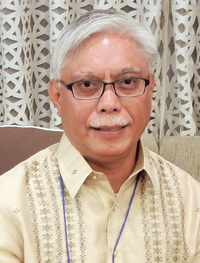‘Philippines has much to learn from Korea’

The Philippines can learn a lot from Korea in terms of economic development, said Jose Mariano, president of the University of Asia and the Pacific.
“The situation of the Philippines and Korea was not so different a couple of decades ago,” said Mariano. “But in a decade or two, Korea achieved great levels of economic development. The Philippines can learn from studying Korea’s development,” said the president.
There is also an interest among faculty members at the school in subjects other than business economics such as Korean traditional medicine, the philosophy of taekwondo and classical Korean literature, said Mariano.
“Several professors in the humanities department have plans to collaborate with Korean scholars to translate works of classical Korean literature into English,” he said.
The presence of Koreans is growing as the Philippines now has the world’s eighth largest Korean community with around 120,000 residents.
“About 5 percent of the total student population at the school is Korean,” said Mariano. “We have visiting and regular students from Korea as well as second generation Koreans.”
This was how the Korean studies program at the school was established in 2010. It is part of the Asia Pacific studies program, which is mandatory for students. At least one subject in the program should be Korean studies.
Despite the growing interest, the school currently has only one Korean studies professor. However, with some financial support from the Samsung Electronics branch in the Philippines, the professor who was initially the visiting professor and dispatched by the Korea Foundation in 2009, is now a full professor and research chair.
But with only one professor, sustainability issues remain. The school is therefore looking for more visiting professors to invite, which was one of the reasons the professor was visiting Korea from Aug. 6 to 11, along with other university presidents, researchers at think tanks and government officials.
“We hope that we will be able to receive more funding from corporations not only to hire more visiting professors but also to have Filipino scholars study in Korea to teach at the university when they come back,” said Mariano.
The University of Asia and the Pacific began in 1967 as a think tank, conducting research and offering several graduate courses.
Now a university with 2,000 students, the school still puts heavy weight on research activities.
As the president of a relatively small and young university, Mariano has great ambitions for the school.
“We have several goals set for 2018 such as setting up unique programs not offered by other schools and having 50 percent of the students receive scholarships,” said the president.
“But above all, the mission of the school is internationalization, and offering programs of study on various countries in Asia such as Korea, Indonesia or Vietnam,” Mariano said.
“After all, the name of the school is the University of Asia and the Pacific,” he said with a laugh. “Internationalization is a mission given by the founders of the school.” <The Korea Times/Kim Bo-eun>



